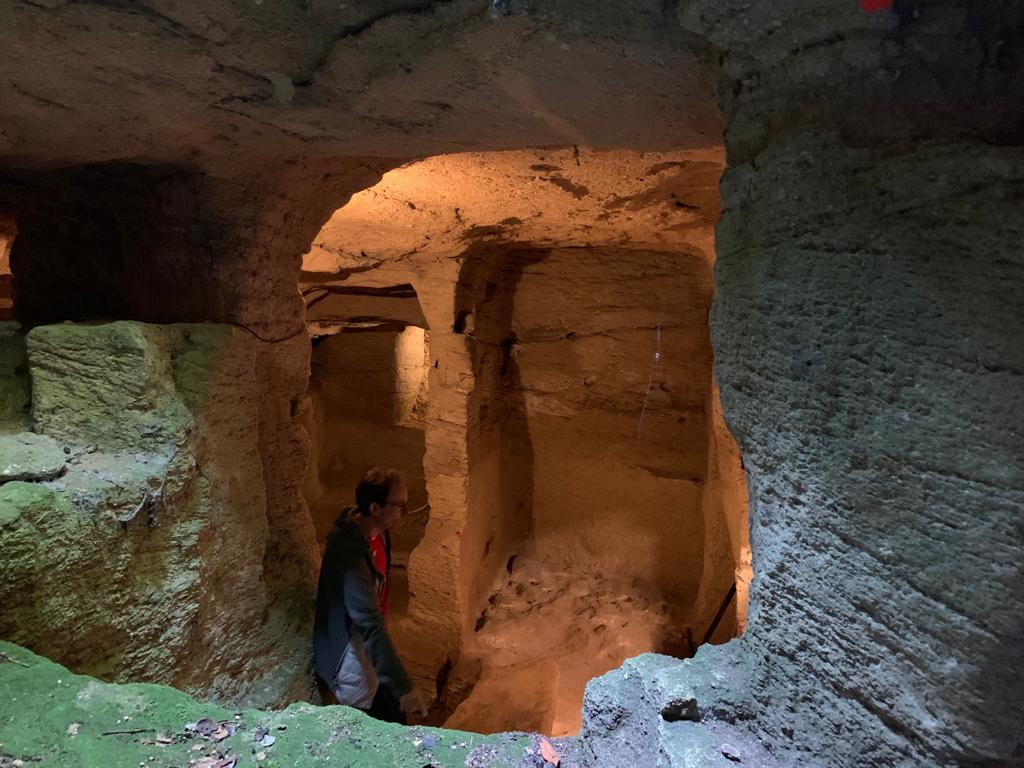Troglodytes & Roses: Off The Beaten Track In The Loire Valley
In this post we explore some of the lesser-known sights in the Loire Valley, in particular a number of sites connected to troglodytes around Rochemenier and Doué-en-Anjou.
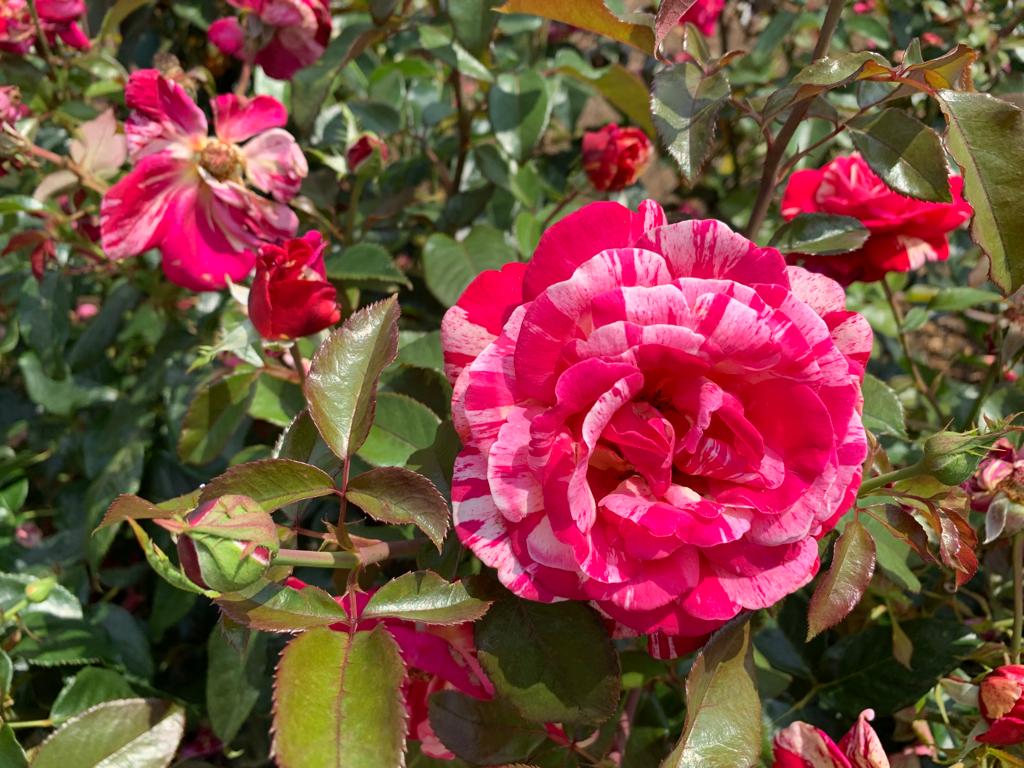
Who Needs Châteaux When You Have Troglodytes And Roses?
When you think of visiting the Loire Valley, what comes to mind? I’m going to guess some of the great châteaux, like Chambord, Blois or Chenonceau. Or maybe the vineyards, a spot of wine tasting? In any case, I can’t imagine that troglodytic dwellings, carved out of soft local rock by enterprising farmers, are what you’re thinking of.
And yet there were once plenty of troglodytes living in the Loire Valley! It’s a good reminder that a place is never just what you see on the posters or tourism campaigns. Scratch the surface, and there’s more than you might expect in almost any place. On a recent visit to rural France (during which we attended this festival), the Urban Geographer and I got off the beaten track. We enjoyed a few of the more unusual sights: both troglodytes and the area’s rose cultivating industry.
If, after reading this post, you are interested in following in our footsteps, we have a few tips. Firstly, although I’m sure organised trips of some kind exist, it will be easiest if you have a car. These locations are relatively far from train stations and there’s not much in the way of public transport. Secondly, we saw the sights below over two days, which was probably our troglodyte limit. Thirdly, not everything is fully available in English, but generally people try. So you might find you have a handout to read during a guided tour in French, for instance.
And lastly, if you do fancy combining some of these sights with the more classic elements of Loire Valley tourism, Saumur is the closest place to find both a château and wine. Although if you’re out in the countryside you will spot plenty of vineyards selling direct to consumers: don’t be shy!
A Small Lesson In Geology And Terminology
Just to orient you, of course.
Firstly, a new word for you: falun. Very important around here: falun is the very soft sandstone which made all these troglodytic dwellings possible. Millions of years ago this area was underwater. More specifically the area where we find falun today was a bay. Sand washed into the bay and settled, but subsequent geological forces didn’t compress it as much as other sandstones. It can be cut out in blocks, but also crumbles very easily back into sand.
People around here made use of this resource in two ways. Firstly, a lot of farmers dug out the falun under their fields, to sell as stone and lime. This left big cavernous spaces with a distinctive shape, some of which we will see on our tour. They also dug themselves homes, sheds and cellars. Even today, property taxes are paid on things that are built, not things that are formed. So it was cost effective, naturally temperature-controlled, and easy. Of course as people wanted more mod cons they began to move away from troglodytic living, but there’s more of an interest again today in terms of sustainable living.
And lastly, the troglodytes we will see today are not the only type around the Loire Valley. Seams of falun allowed local people to dig entire dwellings into the stone. In other areas, people made use of overhangs in slightly harder sandstone (tufa), and built frontages in order to turn them into living spaces. You can see these from some of the train lines in the area if you’re looking.
To finish on terminology once more, I know I’m slightly misusing the term troglodyte. This implies living in a cave, and not all the man-made spaces we will see today were for living in. But it’s a fun word, and very evocative, so I’m sticking with it!
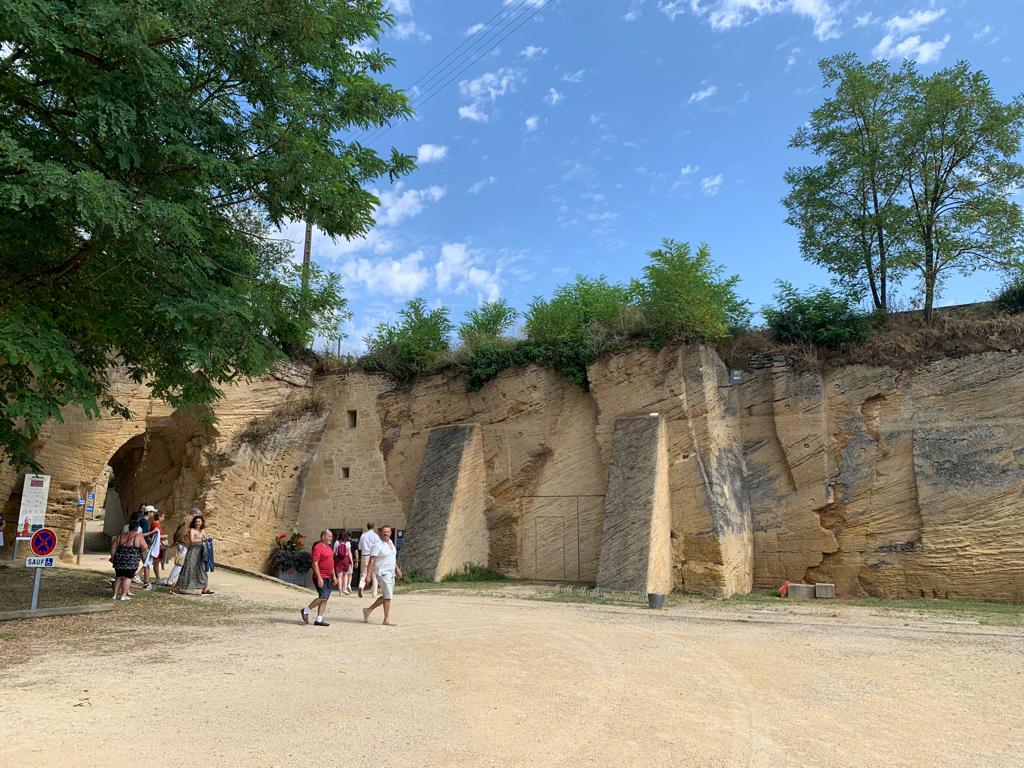


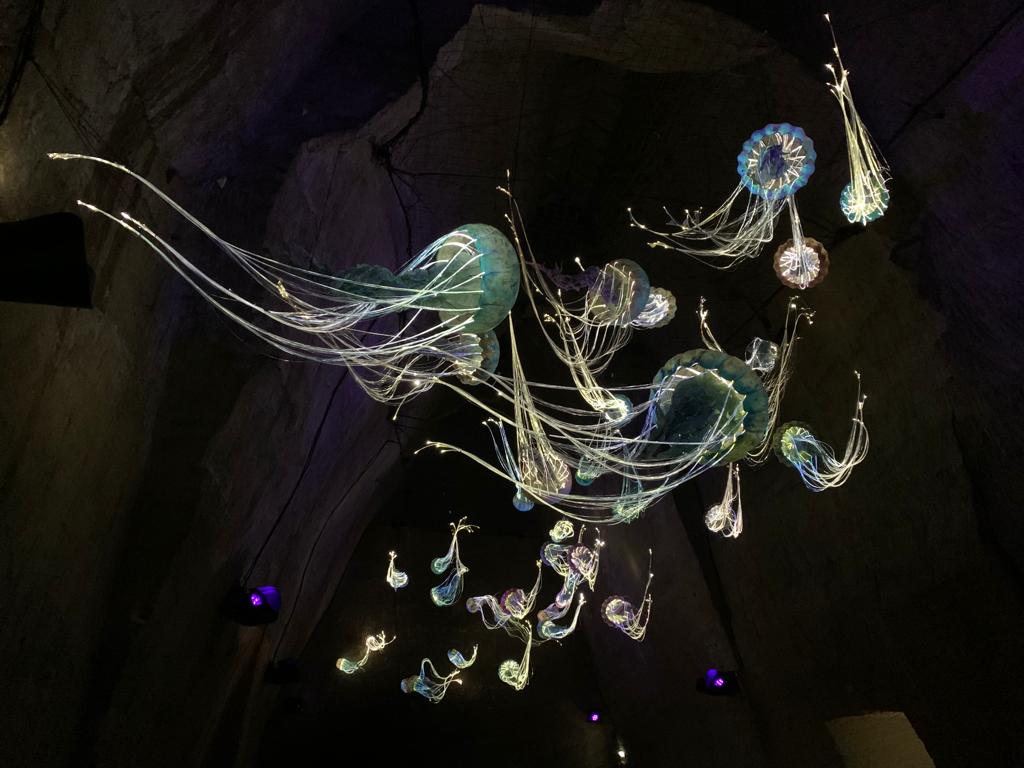
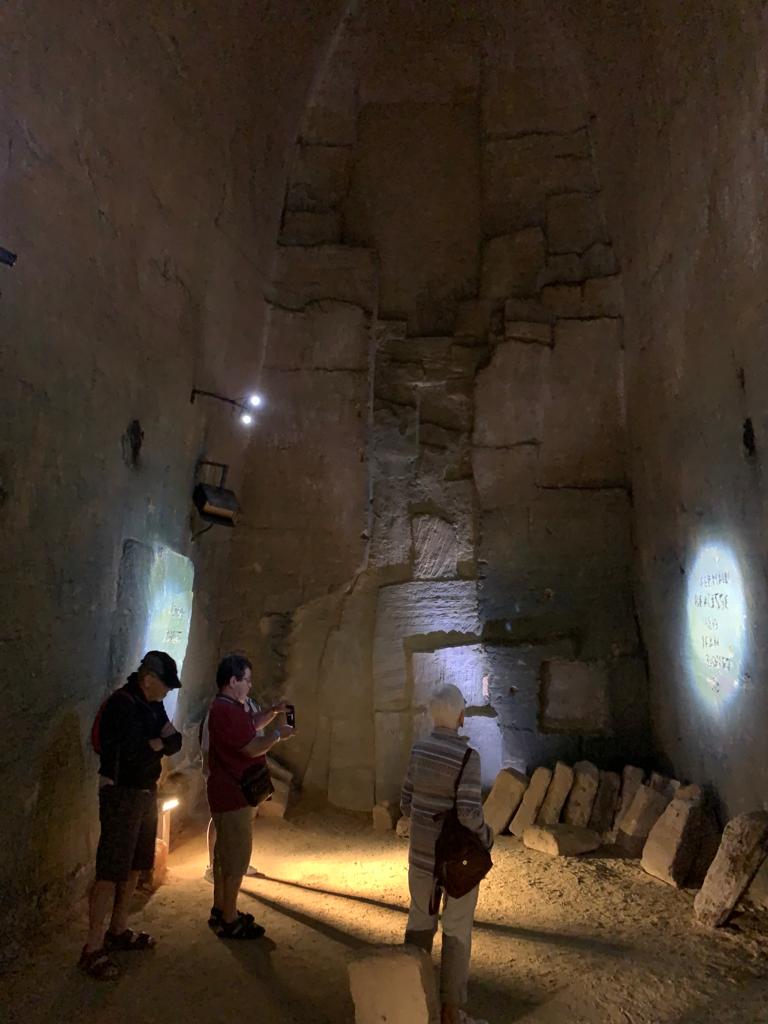
Le Mystère des Faluns, Doué-la-Fontaine
Right off the bat I’ve brought you to a place that isn’t strictly about troglodytes. But it is very cool. This is Le Mystère des Faluns (the Mystery of Falun), also known as Les Perrières (doesn’t translate well but carries with it a connotation of quarries). Le Mystère des Faluns is in the town of Doué-la-Fontaine, and is a historic site with a modern interpretation.
As you enter, you realise the car park is a large quarry. There’s a picnic spot and hops growing nearby for a local brewery, so it’s not a bad spot to end up at lunchtime (you can buy some of the beers in the gift shop). A staff member does your orientation outside, before you head in and buy tickets.
Le Mystère des Faluns is a series of interconnected underground spaces, which were those personal quarries I mentioned that farmers would dig under their fields. It makes a very distinctive shape: the best photo I took of it is actually the very last one at the bottom of the post. Today the underground chambers are joined into one large space, and Le Mystère des Faluns tells two stories: the story of that ancient sea and the flora and fauna in this region millions of years ago, and the story of the farmers who shaped these spaces.
It’s packed full of interpretation, including an animated video which explains the digging process. There are artworks in different chambers, more animations showing animals on land and under water, and a facsimile whale skeleton. It’s a great place for families, but equally impressive to adult visitors. There’s even one troglodyte dwelling onsite in case you feel you’re being short-changed: it’s the toilet block.
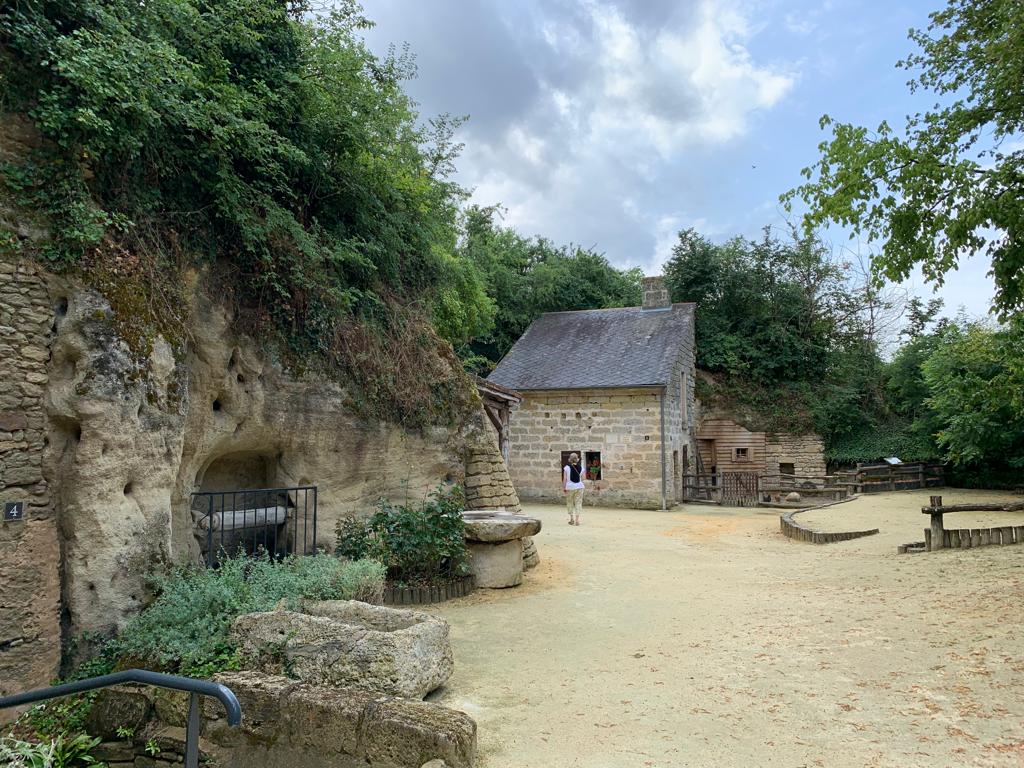
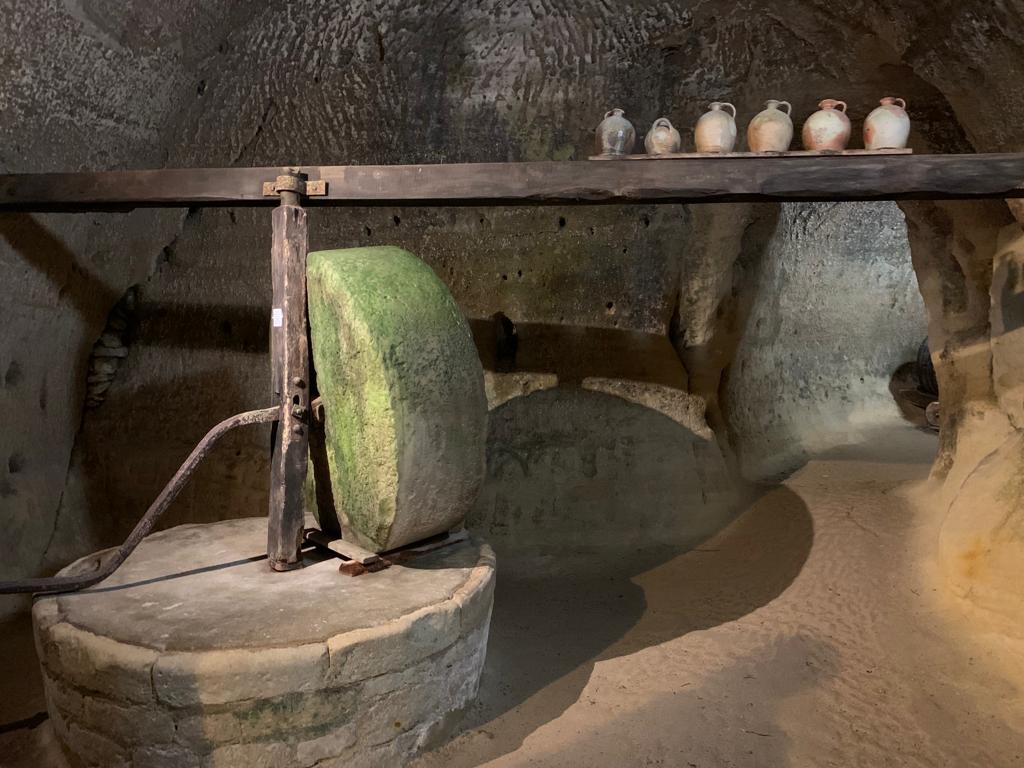

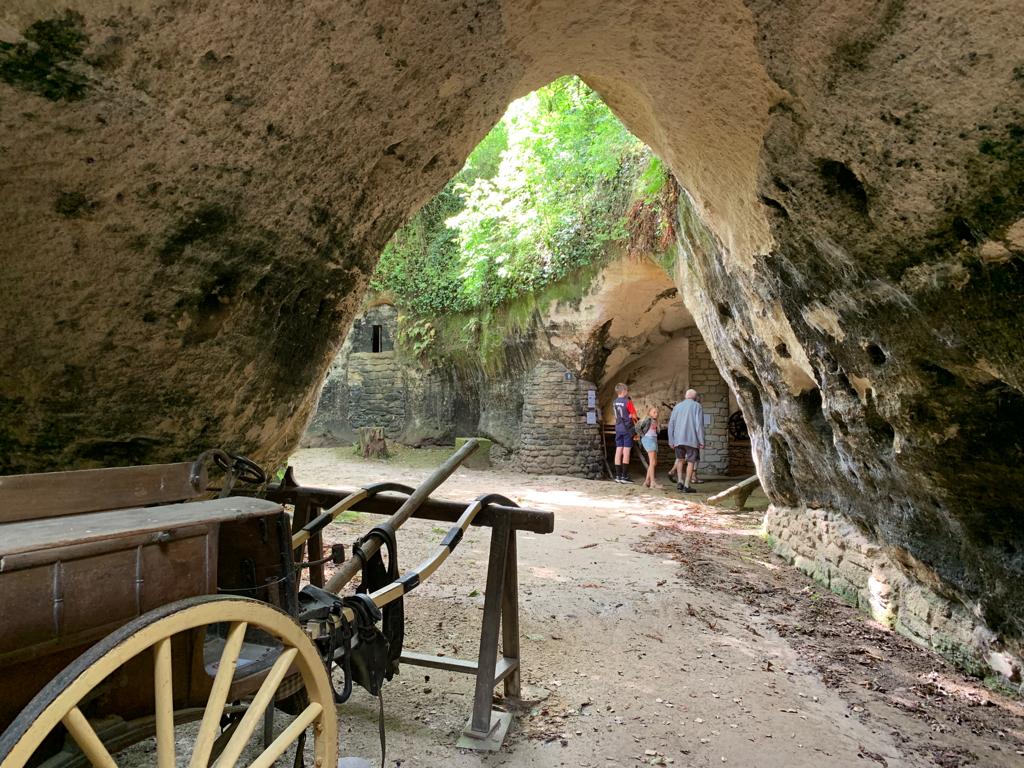

Musée Troglodytique, Rochemenier
OK, now we’re getting into the real troglodytes. This is the Troglodyte Museum in Rochemenier, about 10 minutes’ drive from Le Mystère des Faluns. Rochemenier has about 250 underground rooms distributed across 40 farms. The museum consists of two of the farms, abandoned in the early 20th Century and a visitor attraction since 1967.
You can visit the museum on your own (information available in English), or take a French guided tour at no additional cost. During your visit you can see bedrooms, animal sheds, storage, wine cellars, all dug into the falun. Period objects and reproduction photographs show what life was like for the families who lived here. There are good explanations about some of the accommodations made to make life work below ground. It was more comfortable than you might think: falun is so porous that water drained through it, so it’s not damp like other caves can be. Troglodyte farmers and their families had a reputation for being healthy. It certainly helped that they could just dig a bigger house to fit an expanding family, so didn’t live on top of each other like many did at the time.
Interestingly there are community spaces to visit. Local families would get together of an evening, in cosy underground chambers during the colder months. Here they would talk, sing, and do handwork like making baskets or sewing. There’s also an extraction site like at Le Mystère des Faluns which later became a chapel. During religious wars in the 16th Century, a nearby church burned down and worshippers went literally underground. A few traces remain today including gothic arches.
This was the site we spent longest at during our couple of troglodytic days. You really get a sense of what this way of life was all about, and see almost all varieties of falun troglodyte construction. It has a good gift shop with local products, and combines well with a visit to an underground restaurant, our next stop.
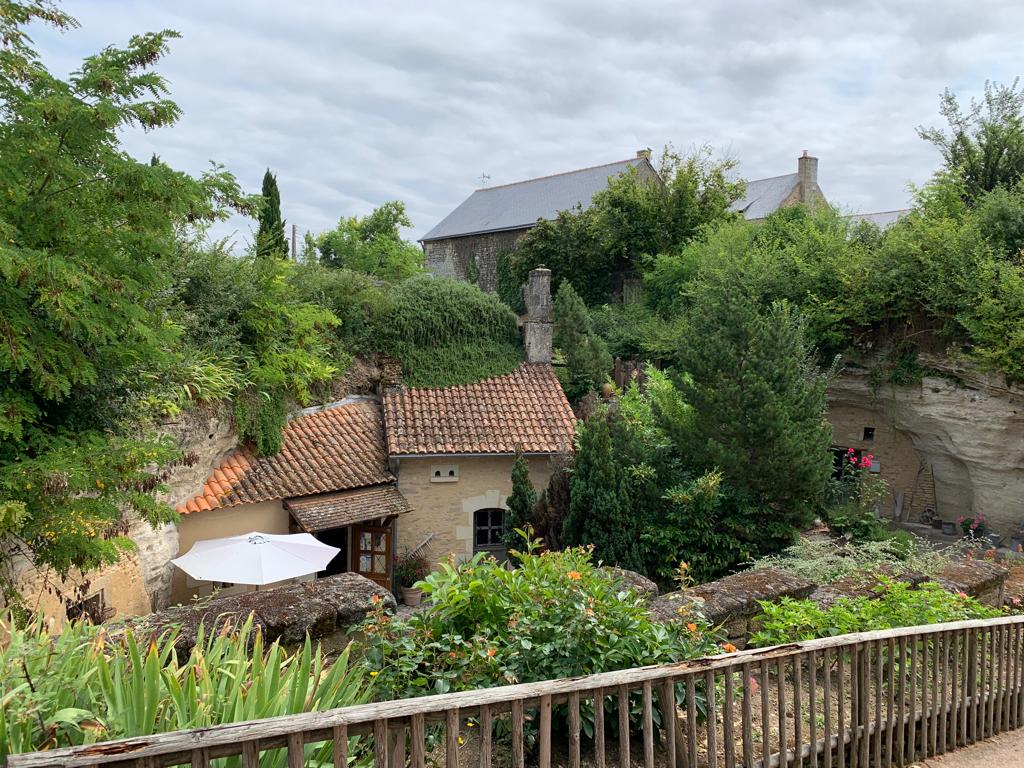
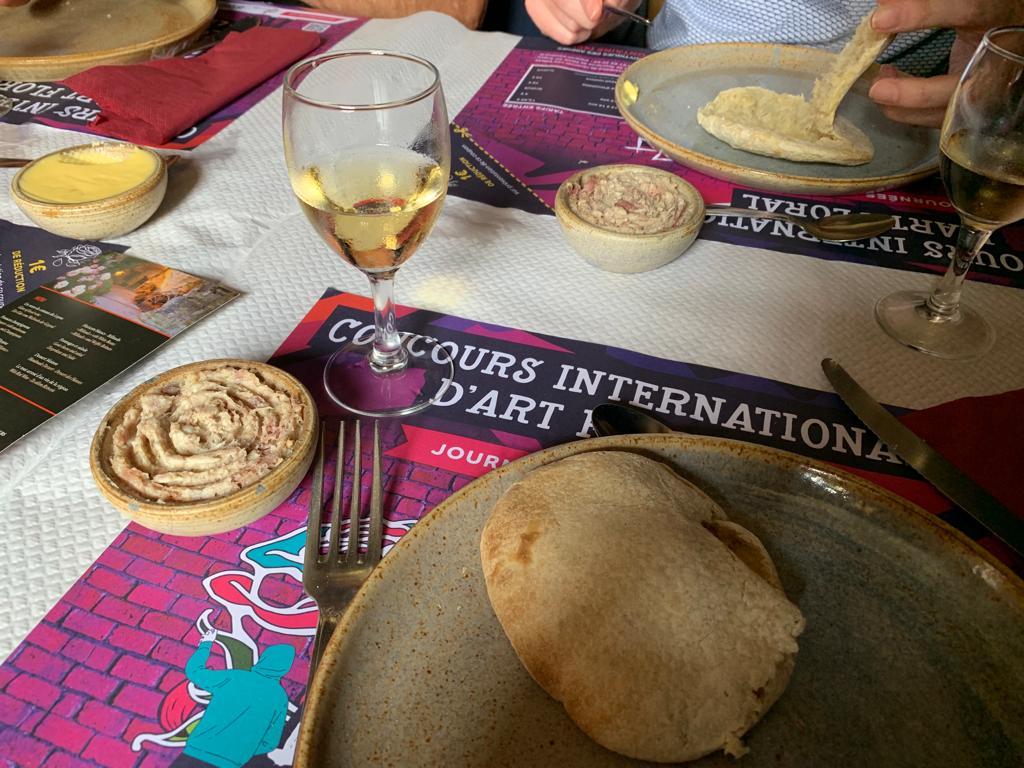

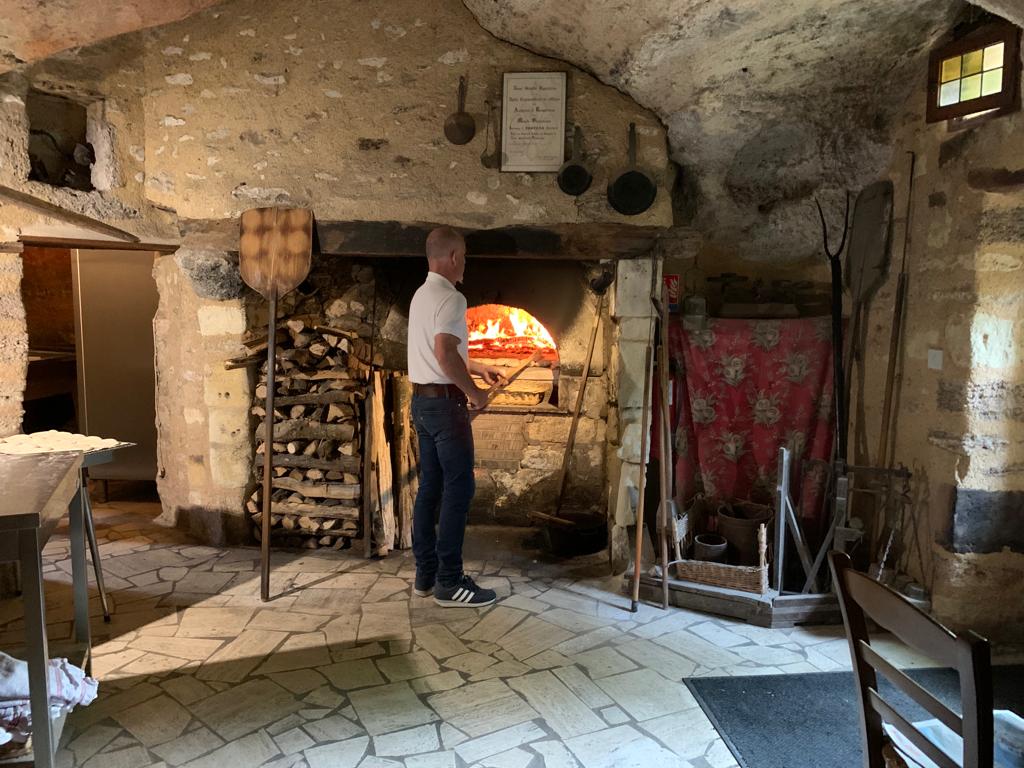
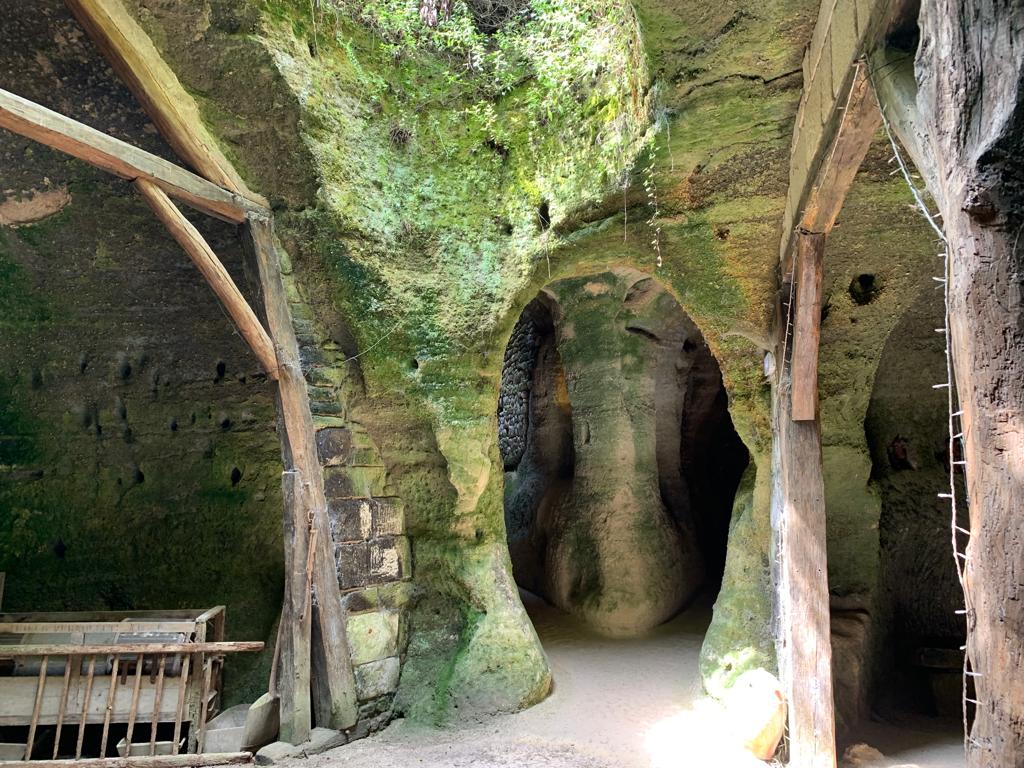
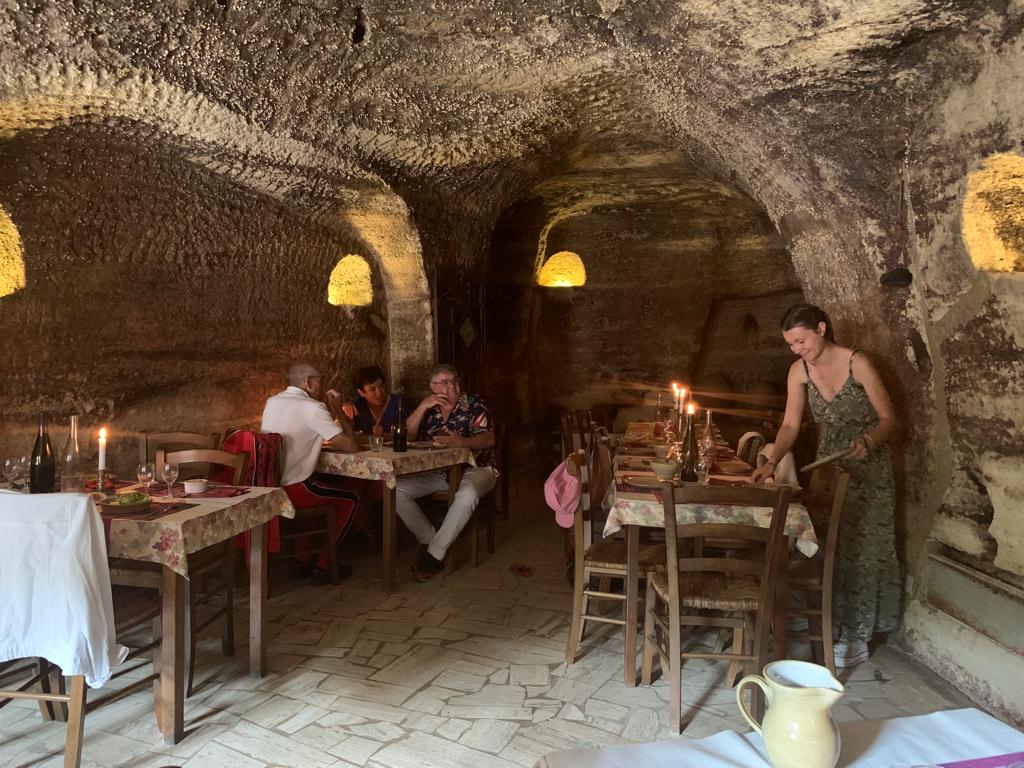
Les Caves de la Genevraie
For lunch on our main day of troglodyte activities we ate at Les Caves de la Genevraie, also in Rochemenier. It was a unique and very substantial meal! First of all, you guessed it: it’s underground. You walk down from street level to enter, and inside find it is a labyrinthine place with lots of small chambers complete with tables and chairs. Candles provide light to eat by, even in summer.
Les Caves de la Genevraie do one thing and one thing only, a local speciality called a fouée (also known as a fouace). There is one fixed price menu, very few substitutions, and you’d better come hungry. A fouée is a type of bread, sort of like a small pita cooked in a wood oven. They come out piping hot, and you eat them with a variety of fillings. The menu consists of a welcome drink, rounds of fouées with mushrooms (you can swap these for ham), rillards (rillettes: like a pâté but meatier), a dish called mogette which is beans and pork, salad and cheese, a choice of dessert, and wine. One of the dessert options is even more fouées.
It’s so much food that you’re encouraged to go for a walk before the salad course. The restaurant have a semi-open bakery where you can see the fouée maker at work in front of his wood fire. He will answer questions and have a chat while he uses a simple hook to turn them and pull them out when they’re done. Then there is a museum, a smaller version of what we’ve just seen up the street. If you’re short on time, therefore, this is a good option. Vegans need not bother though, it’s not that kind of place. There is also a hotel if you fancy staying underground!
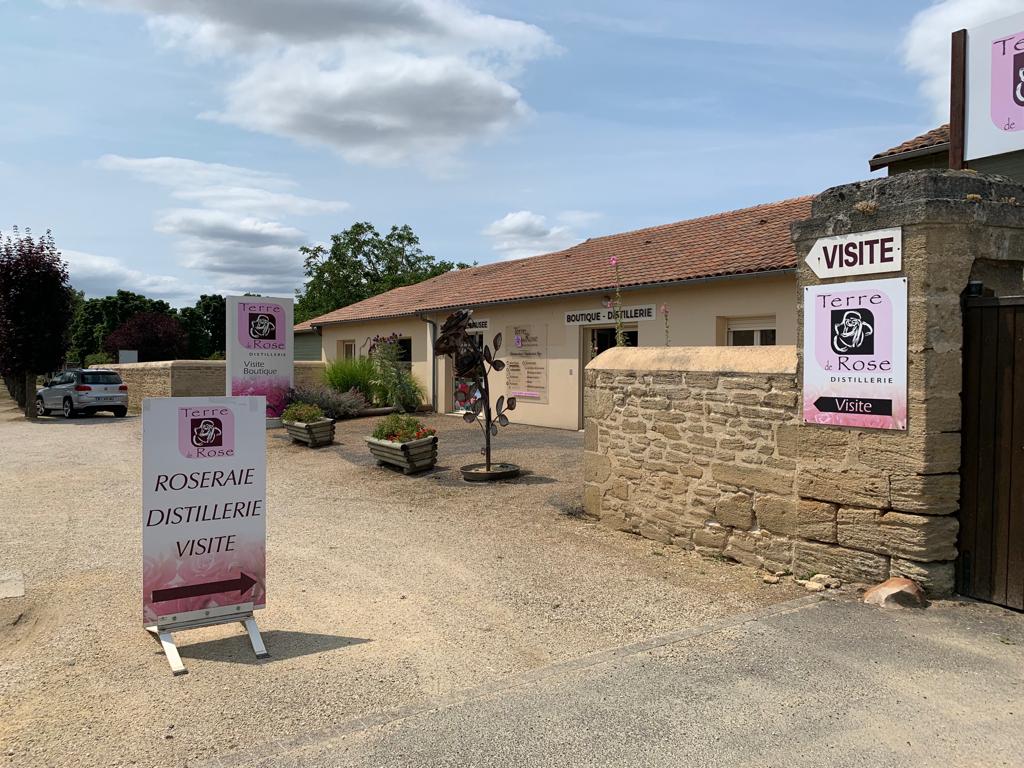
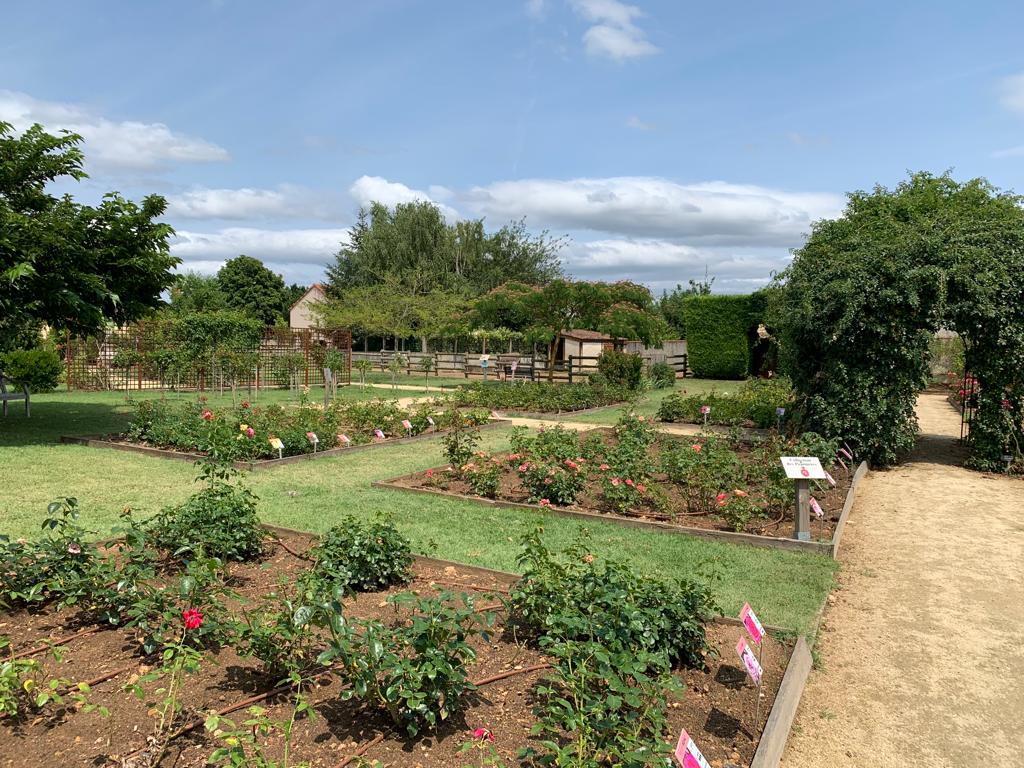
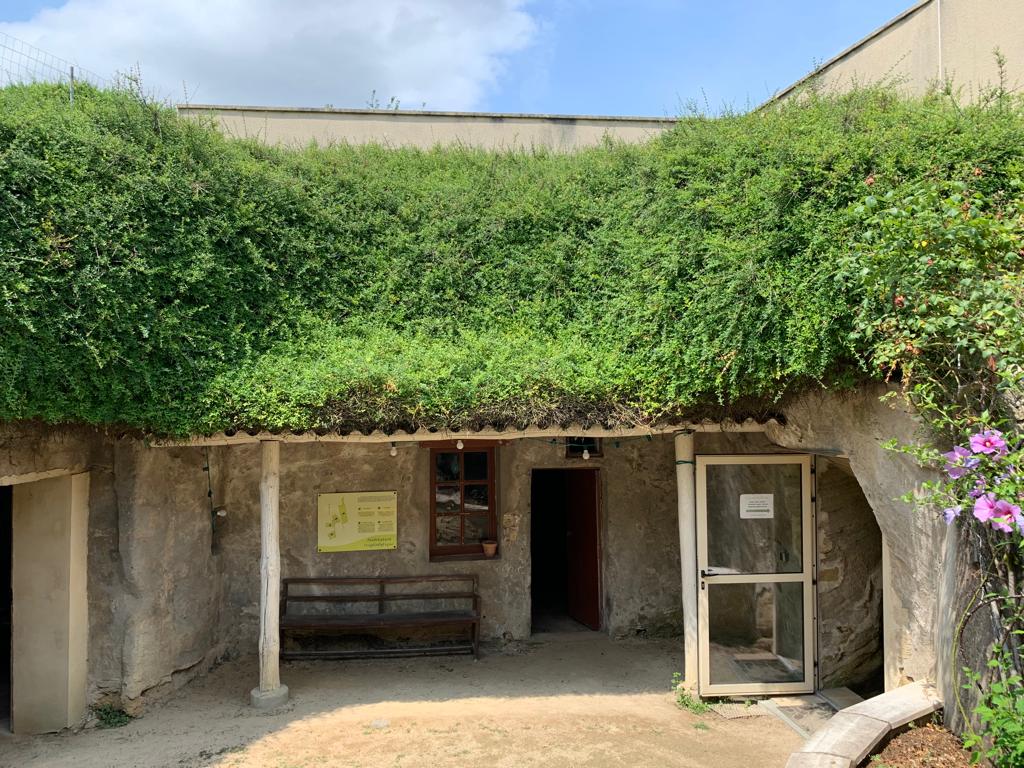
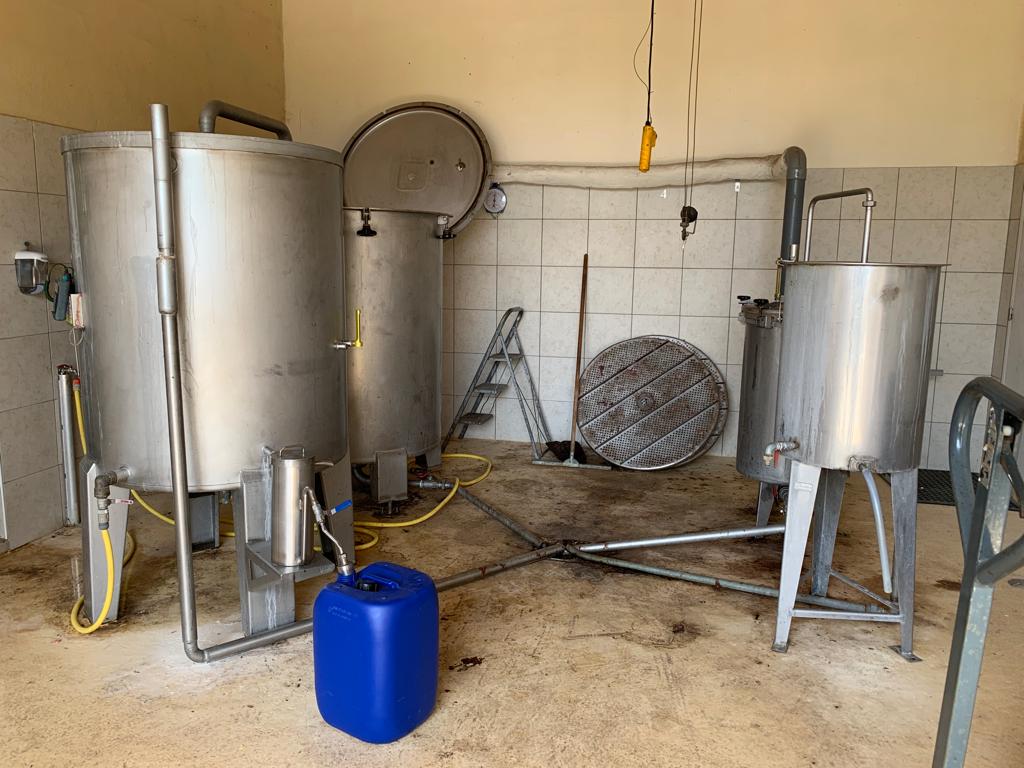
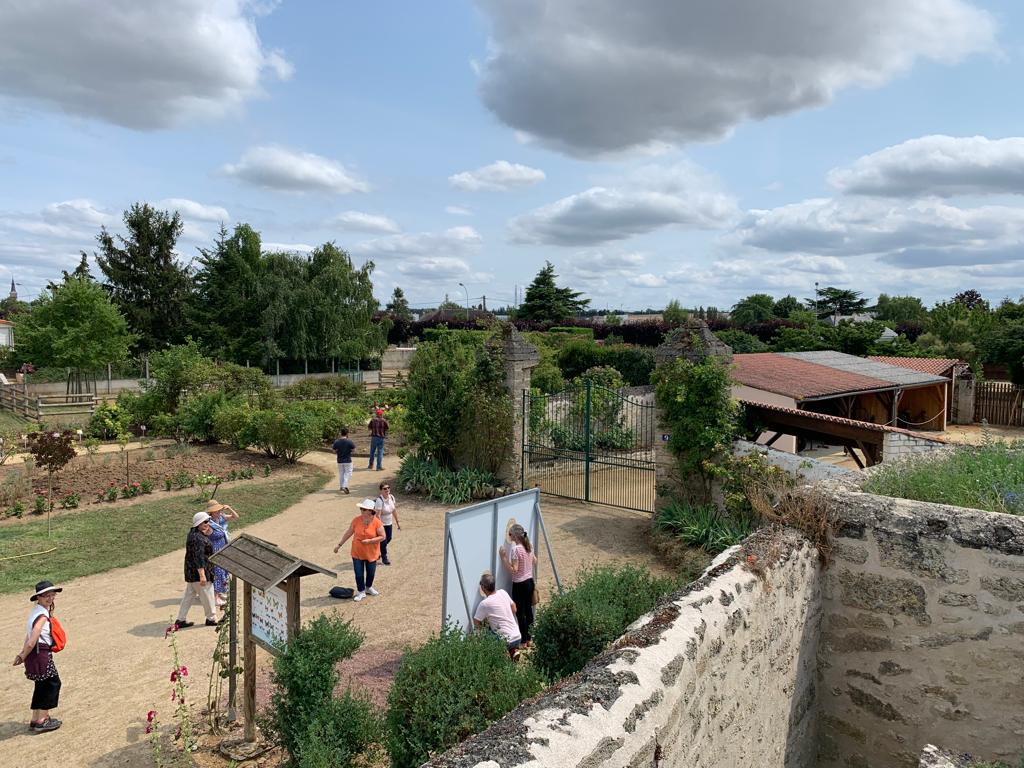
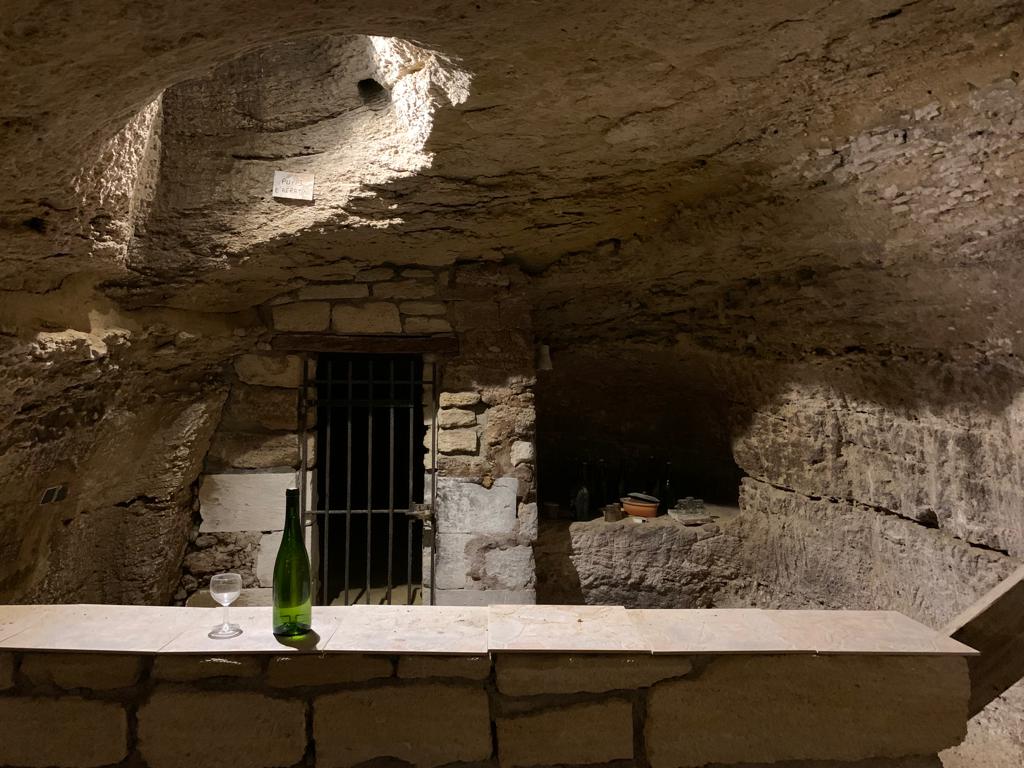
Terre De Rose, Doué-la-Fontaine
Let’s take a short break (sort of) from our troglodyte friends, to focus on another important local way of life: roses. The Loire Valley has a perfect climate for growing roses, and local businesses grow them to sell (as flowers and plants) as well as creating secondary products like rosewater. Terre de Rose, in Doué-la-Fontaine, is in the latter grouping.
For a small entrance fee, you have access to large gardens with a number of sights. It almost goes without saying at this point that there is a small troglodyte house and museum, but it was the most disappointing one of the day for me so you can safely give it a miss. There’s a rose garden to see, animals to pet, a historic farm to visit, and of course the distillery, where you can hear talks at certain times. There is a large giftshop very suitable for buying gifts for grandmothers, and a shaded café where you can have a rose-flavoured cordial/lemonade/beer – you name it!
I raced around everything in about half an hour, but equally slowing down and enjoying the shade and the friendly animals would have been a good plan too. It’s a great late afternoon spot, letting the scent of the rose bushes waft over you as you sit and relax.
If you fancy more roses and fewer troglodytes, there’s a full Route de la Rose just north of the Loire. We appreciated it as a brief interlude and something different before we headed to our final underground site.
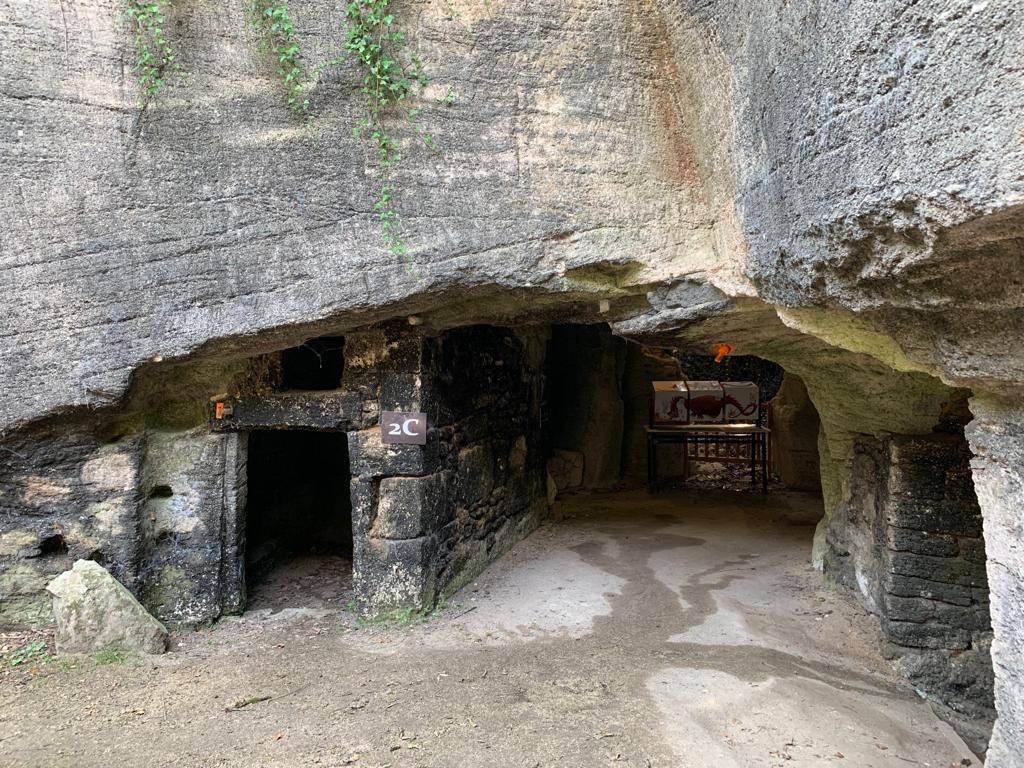

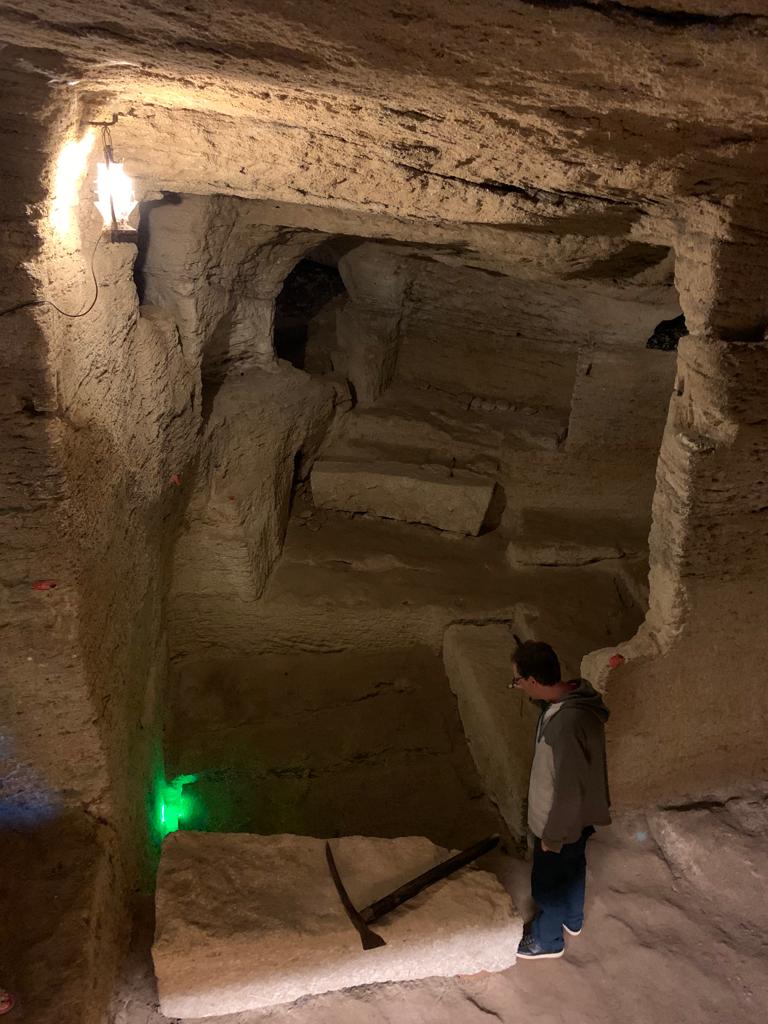
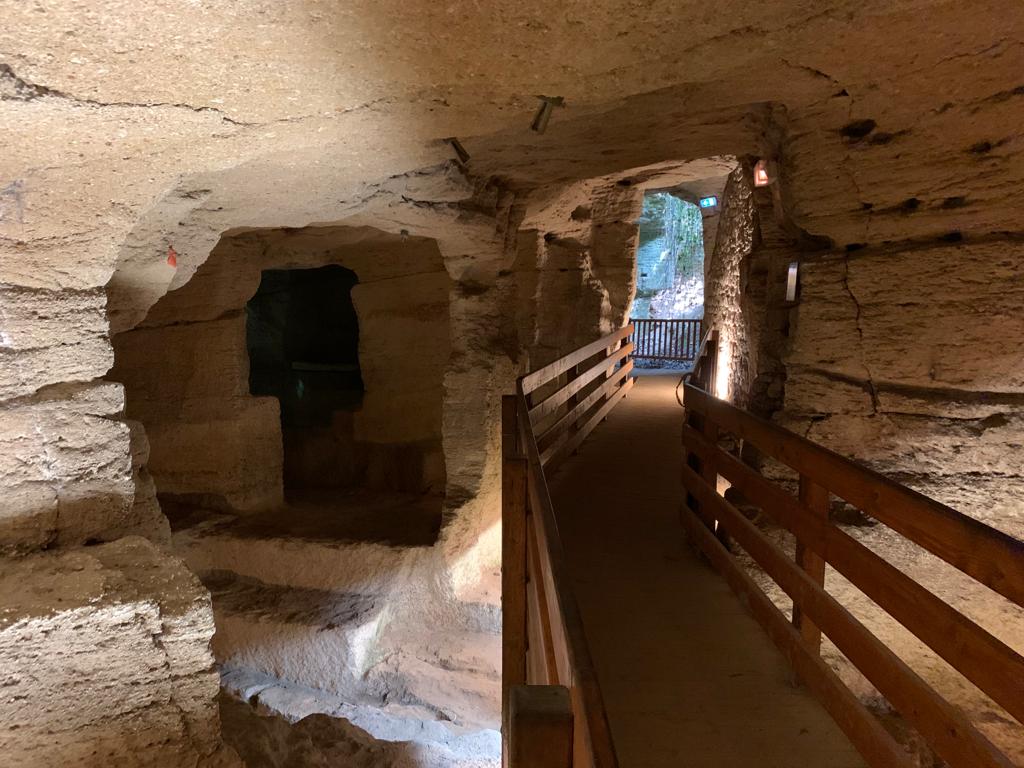
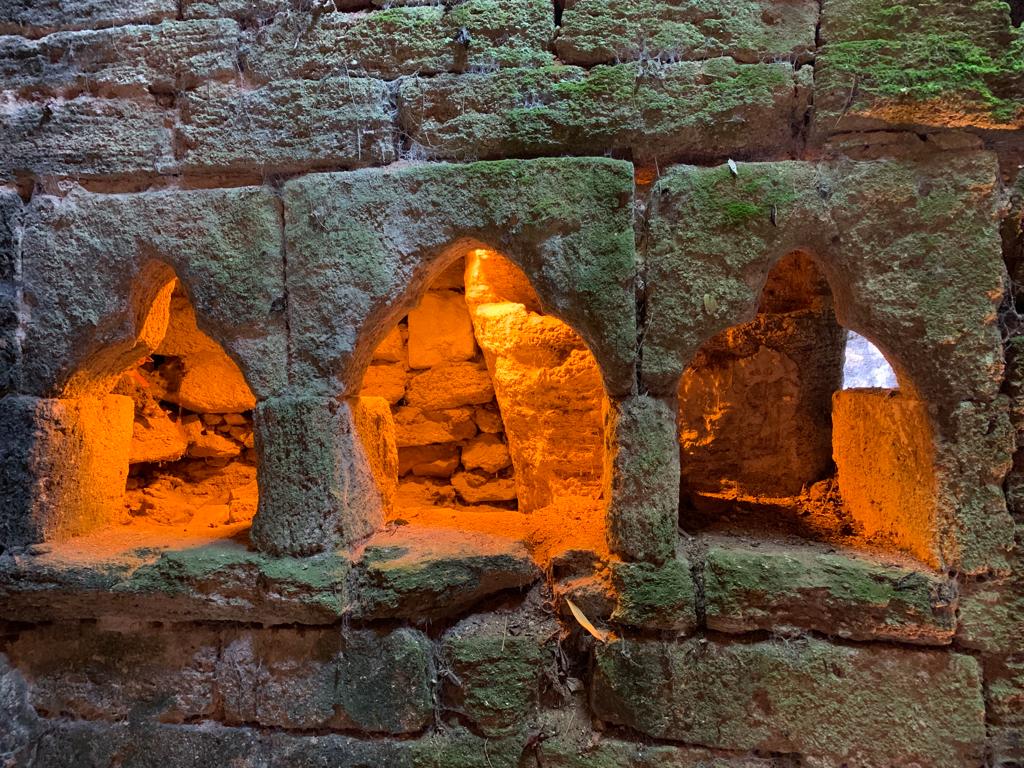
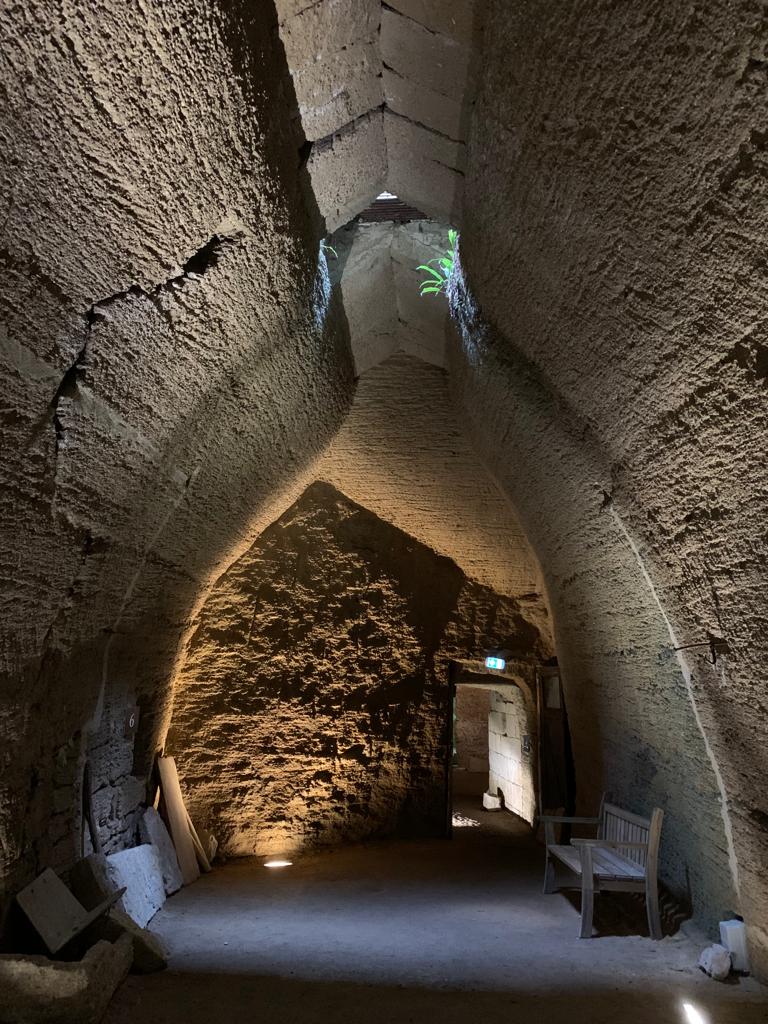
Troglodytes et Sarcophages, Doué-la-Fontaine
If you don’t speak French you’ve probably guessed that word correctly anyway: this last stop is all about troglodytes and sarcophagi (as in coffins, like you find a mummy in). This one had the most interesting story out of all the places we visited on our two days. Visits to Troglodytes et Sarcophages are by guided tour: you can book in advance to avoid disappointment. Non-French speakers will be provided a handout in English (or you can do like the Urban Geographer did and bring me for live translations).
This site, also in Doué-la-Fontaine, was once home to a bustling Merovingian sarcophagus industry. Over the life of the quarry (a couple of hundred years), workers hand carved and extracted more than 20,000 sarcophagi. Sarcophagi from this site went as far as England. It’s all rather remarkable, especially when you remember that falun is so soft it can’t have been easy to work.
Our tour guide explained three separate periods in history to us. Firstly the original sarcophagus workshop: how they were made, how they were extracted, the technical and commercial history. Then there is a very surprising afterlife. Some time later, after the site had been abandoned, Vikings arrived. Yes, Vikings in the Loire Valley. The local people decided on passive resistance. They moved into the abandoned sarcophagus site, adapting it for their needs. They tended to be smaller than the Vikings, and so could create small entranceways and defend themselves against intruders. The little Gothic windows above are a remnant of their time here.
And then there’s the story of how this site came to be a tourist attraction. It was only in the 1990s that an archaeologist came across it. The proprietor, a winemaker, had never been curious enough to look beyond the accumulated rubbish and realise how vast the site was. Over five years of digs revealed the full extent of it, and today you can see clear evidence of each layer of history during your visit. It’s a great way to end our troglodyte (and roses) tour of the Loire Valley, a very unique place indeed.
If you see this after your page is loaded completely, leafletJS files are missing.

